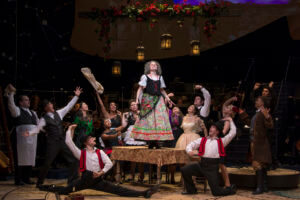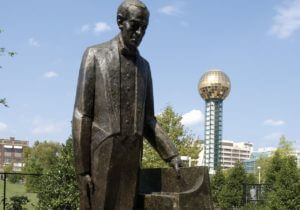Return to Rachmaninoff
If you’ve been keeping up with the symphony, you know that some of the members have been busy with Candide at the Clarence Brown Theatre. It’s been fantastic to be playing Bernstein’s music and to have the privilege of watching the amazing actors around us for eight shows a week. How do they memorize all of that music? And move around? The cast even includes the symphony’s own Director of Education and Community Partnerships, Jennifer Barnett Harrell.
It’s been a great way to come back to work after a summer break.

The season for the entire orchestra kicks off in a couple of weeks as we begin rehearsing for the first Masterworks concert. It’s always exciting to start the season because there is the realization that some players have moved on, new players have joined the orchestra, and others have expanded their families. It’s always nice to be back in the Tennessee Theatre, especially for those of us who were around before the big renovation of 2003-2005. In addition to the changes that you are aware of, the players are so grateful to have more than one bathroom (intermissions were challenging), a loading dock with an elevator, and a stage that we comfortably fit on.
We are so lucky to be able to perform in the Tennesse Theatre, and it’s always exciting to see the lights around the stage change to purple as the concert begins.
After that, it’s on to Rachmaninoff’s Piano Concerto No. 2, featuring guest artist Joyce Yang. If you’ve been part of the classical music scene in Knoxville, you probably know that Rachmaninoff was a world-renowned composer/pianist who gave his last performance here in Knoxville back in 1943. There’s even a statue commemorating the concert in Worlds Fair Park.

Not all performers are talented as composers. Many critics dislike Franz Liszt’s compositions although they give him credit for being an amazing pianist. Rachmaninoff’s works, especially his piano compositions, seem to fare better, and they are certainly a workout for the performer.
Brahms’ Symphony No. 1 is a large work that many regards as a continuation of what Beethoven would have done if he’d lived longer. Brahms is a master of adding in underlying rhythms beneath melodies. They are complicated and give a listener the impression that there is a lot going on. Rather than listen to me explain this with words, check out this Piano Puzzler from NPR’s Performance Today from August 29, 2018 to hear an example of how Brahms might write an accompaniment to a well-known tune.
Enjoy our first Masterworks concert!
Information and tickets to the Sept. 20-21 Masterworks performances of Brahms & Rachmaninoff can be found here.





